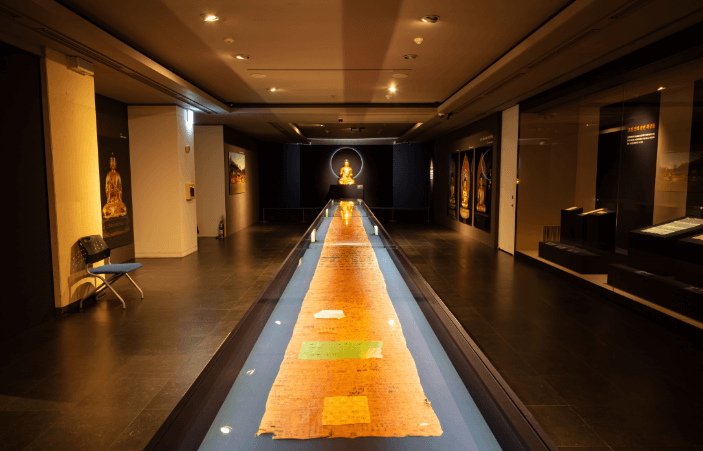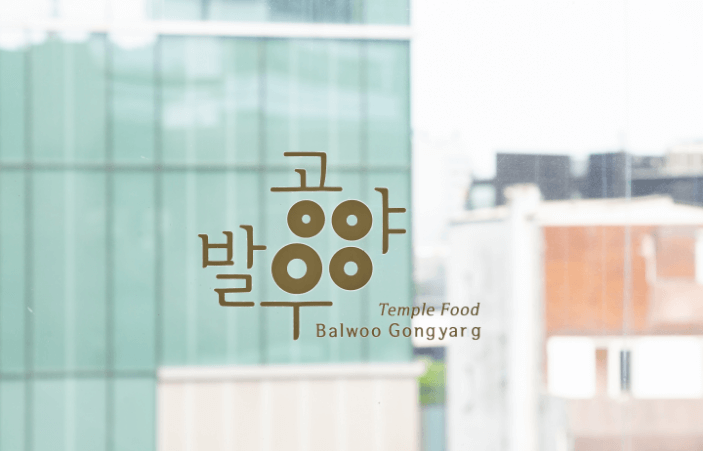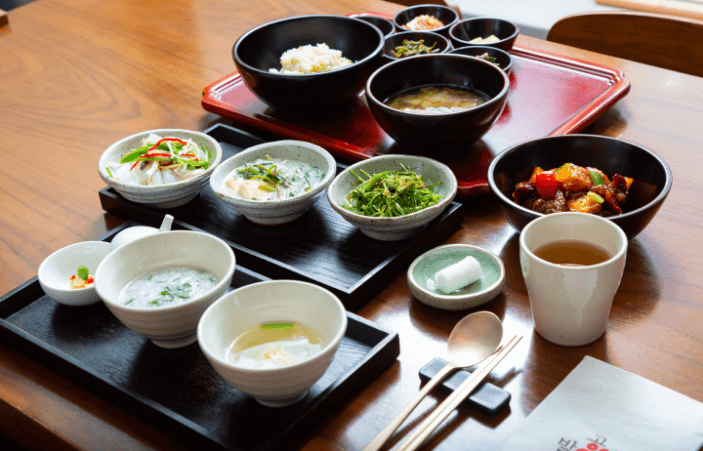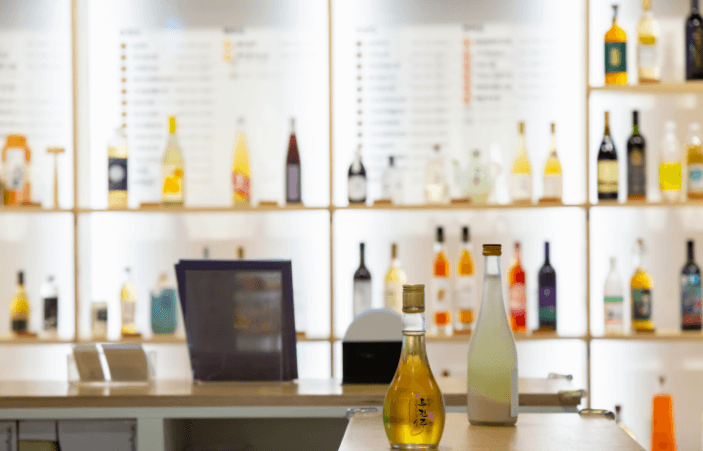Traveling is like training: you can explore unfamiliar places and evolve through unique experiences. The tour provides an experience of the indispensable elements of Korean culture: Buddhism and traditional rituals. This journey introduces a pilgrimage through Korea's authentic beauty and flavors that were previously inaccessible.
* Walking Standard

For Seoul's citizens, Jogyesa Temple is a serene haven open for prayer to anyone regardless of religious affiliation. Its tranquil atmosphere offers a refreshing respite amidst the urban rush. With its central location, it remains a popular date spot and major tourist destination.
Jogyesa Temple is the main temple of the Jogye Order of Korean Buddhism and maintains a century-long legacy of Buddhist culture. Established in 1910 as “Gakhwangsa,” it was later relocated in 1937 and renamed “Taegosa.” Following the Buddhist Reform Movement in 1954, it was finally named Jogyesa.
The temple has the largest single-story building in Korea, the Main Buddha Hall, which enshrines the Buddha Triad. Additionally, an academically esteemed wooden statue of Sakyamuni Buddha is located on the right side of the Buddha Triad. Another significant sight is the eight-sided, 10-story stupa, Jinsinsaritap, that enshrines Buddha's relics. Jogyesa Temple is the heart of a traditional cultural tour, enriched with a profound history intertwined with Buddhist teachings.
The locust tree that guards Jogyesa Temple is more than 450 years old and was designated as a protected tree by Seoul City. The Jogyesa Lacebark Pine, which is more than 500 years old, is also recognized as Natural Monument No. 9.
Visitors to Jogyesa Temple should not miss the Buddhism Central Museum on the temple grounds. It displays many cultural artifacts that trace Buddhist heritage and provide a comprehensive understanding of Buddhist culture. The promotion center has hands-on Buddhist cultural programs such as lotus lantern crafting and rosary making. With the Templestay program, visitors can engage in traditional Buddhist practices such as the 108 prostrations, tea ceremonies, dawn prayers, and Zen meditation.
- Address 55 Ujeongguk-ro, Jongno-gu, Seoul
- Inquiry Jogyesa Temple 02-768-8600 / Buddhism Central Museum 02-2011-1660 / Templestay Information Center 02-2031-2000
Balwoo Gongyang is a restaurant specializing in temple cuisine. It is directly operated by the Jogye Order of Korean Buddhism and serves meals prepared using traditional temple cooking methods, allowing patrons to glimpse into 1700 years of Korean Buddhist history. In Buddhism, gongyang is considered a form of practice. Following traditional Buddhist ceremonies, diners can learn the wisdom of practitioners and the gratitude for every step leading to the presentation of the food, along with a culture that values frugality.
A meal at Balwoo Gongyang begins with an appetizer to stimulate ”the appetite, followed by porridge, which symbolizes the beginning of the day. Guests can savor various flavors and aromas with the main dishes, enjoy the texture of side dishes, and conclude with a dessert that completes the culinary experience.
Balwoo Gongyang is located on the fifth floor of the Templestay Information Center across from Jogyesa Temple. After dining, visitors can explore the Templestay promotion center on the first floor and have an opportunity to purchase traditional Buddhist tableware called “Balwoo.” Complimentary experiences such as crafting lotus lanterns, making prayer beads, and calligraphy are also available.
* What is Balwoo Gongyang? It refers to the practice of monks using traditional tableware called Balwoo during their meals.
- Address Fifth Floor of the Templestay Information Center, 56 Ujeongguk-ro, Jongno-gu, Seoul
- Inquiry 02-733-2081
E:eum is a venue established by the Ministry of Agriculture, Food and Rural Affairs, the Korean Food Promotion Institution, and the Korea Agro-Fisheries & Food Trade Corporation to promote the excellence of traditional Korean food culture. It operates with the dual goals of providing hands-on experiences and promoting Korean cuisine and is accessible to all.
The space is furnished with traditional low dining tables and floor cushions and is a place where visitors can take photos and relax. The first floor has the Food Master Experience Promotion Center and E:eum Café. Guests can explore traditional liquors from different regions and purchase traditional food made by artisans. The adjoining café serves a variety of teas and snacks, while the adjacent Korean Food Gallery holds exhibitions that merge traditional Korean cuisine with modern aesthetics.
In the Traditional Liquor Gallery, guests can explore the tastes, elegance, and cultural significance of Korea's representative fermented beverages. Pre-booked visitors can participate in free regular tasting sessions. Moreover, E:eum has a variety of amenities, including a Korean food library, E:eum Hall, a learning center for Korean cuisine, and the Food Master Experience Hall. There is also a designated nursing room so that those with young children can visit comfortably.
- Address 18 Bukchon-ro, Jongno-gu, Seoul
- Inquiry Korean Traditional Food Culture Space E:eum 02-6320-8488, Traditional Liquor Gallery 02-555-2283
Bukchon, built by the nobility of the Joseon Dynasty, is a village that still preserves the ambiance of traditional hanok. At the edge of the winding alleyway in Bukchon, Rakgojae Culture Lounge Aegaheon is an exclusive space for private traditional cultural experiences.
Aegaheon restricts general admission and operates strictly on a reservation-only basis,. Guests must ring the bell by the main gate at their reserved time and will be let in by staff. This is for a more personalized experience, since only the reserved party can access the entire hanok comfortably.
Aegaheon's signature experiences include a traditional tea ceremony and an afternoon tea course. After making a reservation, guests can enjoy a Korean traditional tea experience under the guidance of a specialist.
- Address 16 Bukchon-ro 11-gagil, Jongno-gu, Seoul
Bukchon boasts serene hanoks in every alley, ranging from antique charm to sleek modern adaptations. As night falls, the allure of Bukchon is amplified.
We recommended staying in a hanok for a night and immersing yourself in this romantic setting. Bukchon has a variety of hanok accommodations from exclusive hanok stays and guesthouses with breakfast to luxurious hanok hotels that merge the beauty of hanok with modern conveniences. Some even feature open-air baths. Just sitting quietly on the wooden porch of a hanok bathed in moonlight will be an unforgettable memory.

한국관광공사가 창작한 본 저작물은 공공누리 제4유형 조건에 따라 이용이 가능합니다.
한국관광공사에 의해 창작된 [청와대 코스 ⑤] 고즈넉한 낭만의 향연, 북촌 전통문화기행은 공공라이선스에 따라 이용할 수 있습니다. 사진 자료의 경우, 피사체에 대한 명예훼손 및 인격권 침해 등 일반 정서에 반하는 용도의 사용 및 기업 CI, BI로의 이용을 금지하며, 상기 지침을 준수하지 않음으로 인해 발생하는 이용자와 제3자간 분쟁에 대해서 한국관광공사는 책임을 지지 않습니다.













